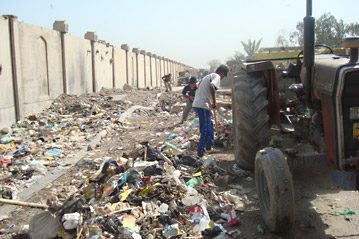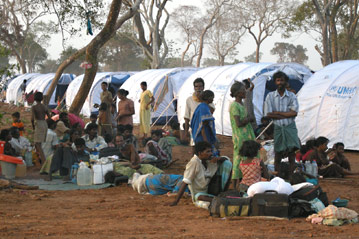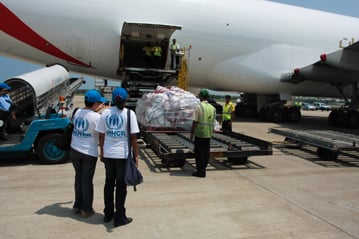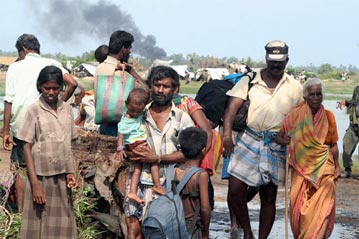More than 100,000 Sudanese now in Chad's camps
More than 100,000 Sudanese now in Chad's camps

GENEVA, June 16 (UNHCR) - More than 100,000 Sudanese refugees are now in UNHCR's eight camps in eastern Chad, less than five months after the refugee agency started relocating them from the insecure Chad-Sudan border.
The UN refugee agency reported that as of Tuesday, a total of 101,218 refugees were being assisted in its camps. Most of them had been transferred on UNHCR convoys from the border in a logistically difficult operation that started on January 19. Several thousands arrived in the camps on their own, bringing livestock and other belongings.
UNHCR is still rushing to transfer an estimated 50,000 to 90,000 refugees remaining along a 600-km stretch of the border, where they will be cut off from assistance once the seasonal rains make roads impassable for trucks.
Hundreds more refugees are still arriving weekly in Chad after fleeing militia attacks in western Sudan's Darfur region, but it has been hard for aid agencies to monitor these arrivals because of the sheer vastness and remoteness of the region.
Ibrahim Yaya Mahamat, 42, recently arrived in the border town of Senette after walking for three hours with his two wives and eight children from their village of Outacha in Darfur.
"On June 2, about 150 men on horses erupted at 6 am in my village," he recalled. "The Janjaweed militia looted all houses and stole our livestock. They killed 12 people. We buried them and left the village with our families. About 200 people left. Only the old people have stayed behind, my mother is still there."
Mahamat added that the Janjaweeds had attacked his village last August. "At that time, we also walked to Senette and stayed here for three months before returning to our village. When we went back, all the houses had been burned and we've just rebuilt them. I don't want to move to a camp [in Chad] now, my mother is still the village and I don't want to go further away from her. I will wait for her to come here and then we will go to the camp."
Another refugee, Mariam Abakar Adam, walked to Senette after the militia attacked his village of Bahanoussa in early June, killing his brother and his son. Like Mahamat, this is the second time Adam and his family are seeking refuge in Chad after repeated attacks on his village.
UN High Commissioner for Refugees, Ruud Lubbers, told a recent Geneva donor conference on Darfur that there was a grave threat of incursions into Chad as well as the infiltration and presence of armed elements among the refugees. He said this could lead to forced recruitment, diversion of humanitarian assistance and harassment of the refugee population.
"Armed incursions by Janjaweed militia continue to constitute a tremendously serious threat to the lives of refugees," Lubbers warned.
In view of the ongoing influx into Chad, UNHCR this week revised its 2004 appeal for its emergency operations in the country. The agency now needs $55.8 million to assist 200,000 Sudanese refugees in Chad by the end of the year. So far, it has only received $18.4 million.
UNHCR now has seven offices in Chad - one in the capital N'Djamena and six in eastern Chad, including a newly opened office in Bahai, north-eastern Chad. The agency's work in the vast, semi-arid region includes distributing emergency aid to refugees at the border, relocating and assisting them in the camps, finding alternative sites with sufficient water to support more refugees, as well as the airlift of emergency relief aid to last 150,000 refugees through the rainy season.









